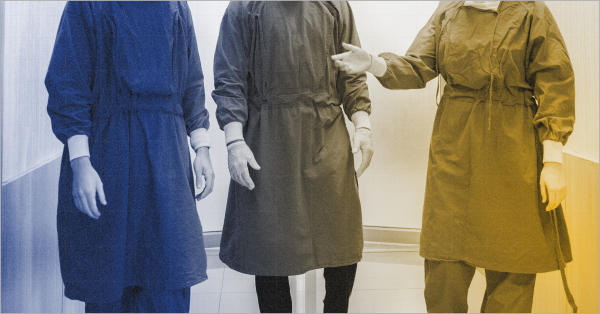In today’s competitive business landscape, maintaining a strong reputation and avoiding costly lawsuits is paramount. Unintentional actions or mishaps can sometimes lead to unforeseen legal consequences, such as defamation claims or copyright infringements. Commercial General Liability Insurance (CGL Insurance) is a crucial safeguard for businesses against third-party claims.
While most discussions focus on bodily injury and property damage coverage, another important aspect is personal and advertising injury liability. This component is particularly relevant in today’s digital world, where reputational risks and legal disputes over content are common. Businesses in India, especially those in media, advertising, and online services, must understand this coverage to avoid unexpected financial and legal burdens. As business environments become more litigious, the potential for facing claims related to defamation, false advertising, or copyright infringement has grown significantly.
This blog post will look into the crucial aspects of Personal and Advertising Injury Liability within CGL Insurance policies in India. We will explore the types of claims covered, how these coverages protect your business, and how to ensure you have adequate protection against these potential risks.
Understanding Personal and Advertising Injury Liability
Personal and advertising injury liability in a CGL Policy covers non-physical damages resulting from specific legal violations. Unlike bodily injury claims, these relate to harm caused through speech, written communication, or business practices. In simple terms, personal and advertising injury liability coverage protects businesses from lawsuits linked to defamation, privacy invasion, false advertising, and intellectual property violations.
The key difference between personal and advertising injury lies in the nature of claims:
- Personal injury relates to offenses such as wrongful eviction, false arrest, or invasion of privacy.
- Advertising injury, on the other hand, covers disputes arising from promotional activities, such as copyright infringement or misleading advertising.
Legal implications in India are significant:
- Defamation is a criminal offense under Section 356 of the Bharatiya Nyay Sanhita (BNS), 2023. A business accused of defamation could face penalties, including imprisonment.
- Copyright violations can lead to lawsuits under the Copyright Act, 1957, which provides protection to creators of original works. Infringements may result in civil and criminal liabilities, including injunctions, damages, and imprisonment.
- Misleading advertising may attract penalties under the Consumer Protection Act, 2019. Under Section 21(4), any person who publishes false or misleading advertisements may be punished with imprisonment or a fine of up to ₹10 lakh. The Central Consumer Protection Authority (CCPA) can also bar endorsers from promoting products for up to a year.
Coverage Under Personal and Advertising Injury Liability in CGL Insurance
A standard CGL Insurance Policy provides personal and advertising injury liability coverage for several scenarios, including:
- Libel and Slander: If a business is accused of making false statements that harm an individual’s or company’s reputation, this coverage helps with legal defence and settlements.
- Defamation and Invasion of Privacy: Covers cases where unauthorised disclosure of information results in reputational or financial harm.
- Copyright Infringement in Advertising: Protects businesses against claims related to the unauthorised use of copyrighted material in marketing campaigns.
- False Arrest, Detention, or Imprisonment: If a business is accused of unlawfully restricting someone’s freedom, this coverage applies.
- Malicious Prosecution: Helps defend businesses against claims of wrongful legal action against an individual.
Despite the broad coverage, there are exclusions. Claims arising from intentional wrongdoing, breach of contract, employment-related disputes, or misleading financial information typically fall outside the policy’s scope. Businesses must review their CGL Insurance policies carefully to ensure they have the necessary protection.
How Personal and Advertising Injury Liability Works in a CGL Policy
When a business faces a claim under personal and advertising injury liability, it must notify the insurer immediately. The insurer evaluates the claim, determines its validity, and either negotiates a settlement or defends the business in court. If the policyholder is found liable, the insurer covers damages up to the CGL Policy limit.
Consider a real-world case study here: In 2022, an Indian e-commerce company faced a lawsuit from a small business claiming that the e-commerce giant had run misleading advertisements that negatively impacted its brand reputation and sales. The lawsuit demanded compensation for financial losses and reputational damage. The e-commerce company relied on its CGL Policy to cover legal expenses and eventual settlement costs, saving it from a significant financial burden. Without this CGL Insurance Policy, the legal fees and compensation could have severely affected the company’s bottom line. This case highlights the importance of personal and advertising injury liability coverage in protecting businesses from such claims.
Importance for Indian Businesses and Professionals
Many businesses assume that they are unlikely to face personal or advertising injury claims. However, even small businesses can be affected. Industries particularly vulnerable include:
- Media and Journalism: News outlets, social media influencers, and bloggers can face defamation suits for the content they publish.
- Advertising and Marketing Agencies: Copyright infringement or misleading claims can lead to legal trouble.
- E-commerce and Retail: Accusations of false advertising are common in online retail.
- Technology Companies: Data privacy violations, software infringement, and online content disputes can result in legal claims.
India’s legal framework places stringent regulations on such offenses. As mentioned before, the Defamation Law, Consumer Protection Act, and Copyright Act all impose penalties for reputation-related damages. Businesses need Commercial General Liability Insurance to manage these risks effectively.
How Does the Personal and Advertising Injury Coverage Differ from Bodily Injury and Property Damage Coverage in a CGL Insurance Policy?
In a CGL Insurance Policy, the personal and advertising injury coverage differs significantly from bodily injury and property damage coverage in terms of the types of risks covered and the nature of claims.
1. Nature of Coverage
- Personal and Advertising Injury: Protects against non-physical harm caused by offenses like defamation, copyright infringement, false advertising, and privacy violations—usually arising from communications and media.
- Bodily Injury and Property Damage: Covers physical harm and tangible property damage caused to third parties, including medical expenses, legal costs, and compensation.
2. Examples of Covered Risks
- Personal and Advertising Injury:
- A company is sued for defamation due to a misleading advertisement.
- A business unknowingly uses copyrighted content in a marketing campaign.
- A store owner falsely accuses a customer of shoplifting.
- Bodily Injury and Property Damage:
- A customer slips and falls in a store, suffering a fracture.
- A business’s operations cause damage to a neighboring building.
3. Legal Framework in India
- Personal and Advertising Injury: Governed by laws like Section 356 of the BNS (Defamation), the Copyright Act, 1957, and the Consumer Protection Act, 2019.
- Bodily Injury and Property Damage: Typically handled under the Law of Torts, Contract Act, 1872, and other civil liability provisions.
4. Financial Impact and Claim Handling
- Personal and Advertising Injury: More subjective and reputational in nature; legal defence and settlements depend on the severity of the perceived harm.
- Bodily Injury and Property Damage: Often quantifiable—covering direct expenses like medical bills, repairs, and compensations.
Key Considerations When Choosing a Commercial General Liability Insurance Policy for Personal and Advertising Injury Coverage
Not all CGL Insurance policies are created equal. Businesses should assess:
- Policy Inclusions and Exclusions: Make sure your coverage extends to all potential advertising and reputational risks.
- Coverage Limits and Extensions: If you are in a high-risk sector (e.g., media, tech), higher limits or riders might be necessary.
- Reputation of the Insurer: Choose an insurer with a reliable claims history and legal support system.
- Legal Compliance: Ensure the policy aligns with Indian laws and sector-specific regulations.
- Additional Riders: Consider riders for cyber liability, data breach, and other modern risks often excluded in base policies.
The Bottomline
Personal and advertising injury liability in CGL Insurance is an essential but often overlooked coverage for businesses in India. Given the country’s evolving legal landscape and increasing digital interactions, companies face higher risks of defamation, copyright infringement, and false advertising claims.
Understanding what is covered, recognizing exclusions, and selecting the right insurer can help mitigate these risks. As legal disputes become more common, having the right CGL Policy isn’t just precautionary—it’s necessary for long-term reputation and financial stability.
Proactively review and upgrade your Commercial General Liability Insurance Policy to ensure it’s aligned with the legal realities and digital dynamics of modern business in India.








